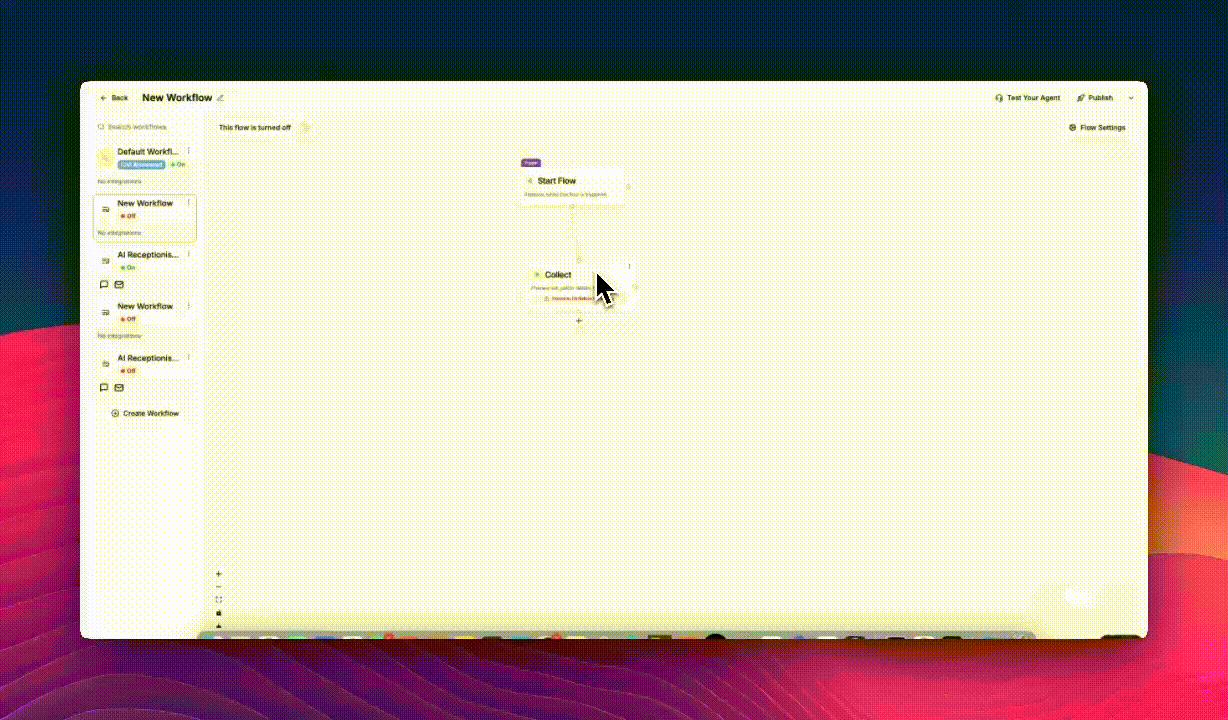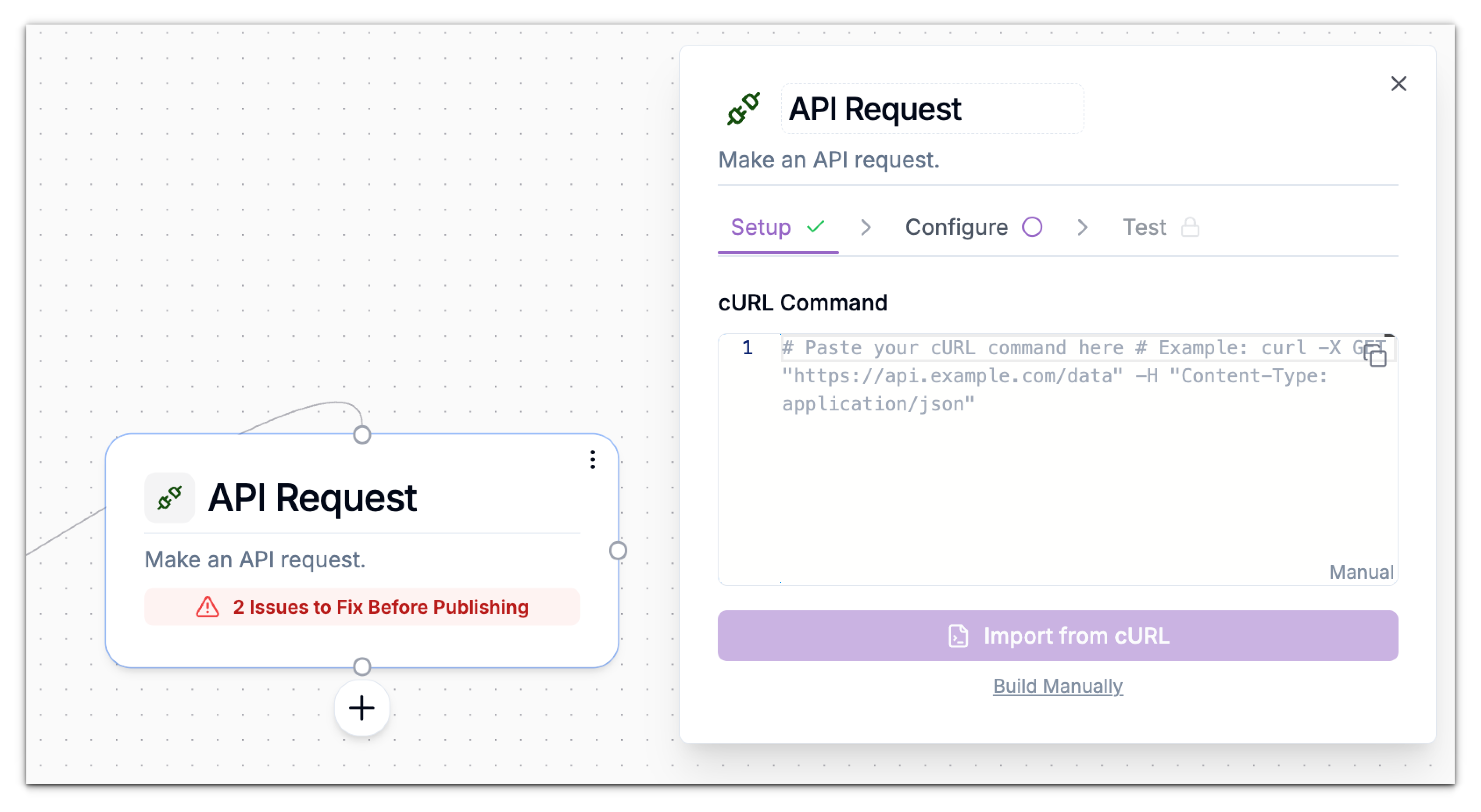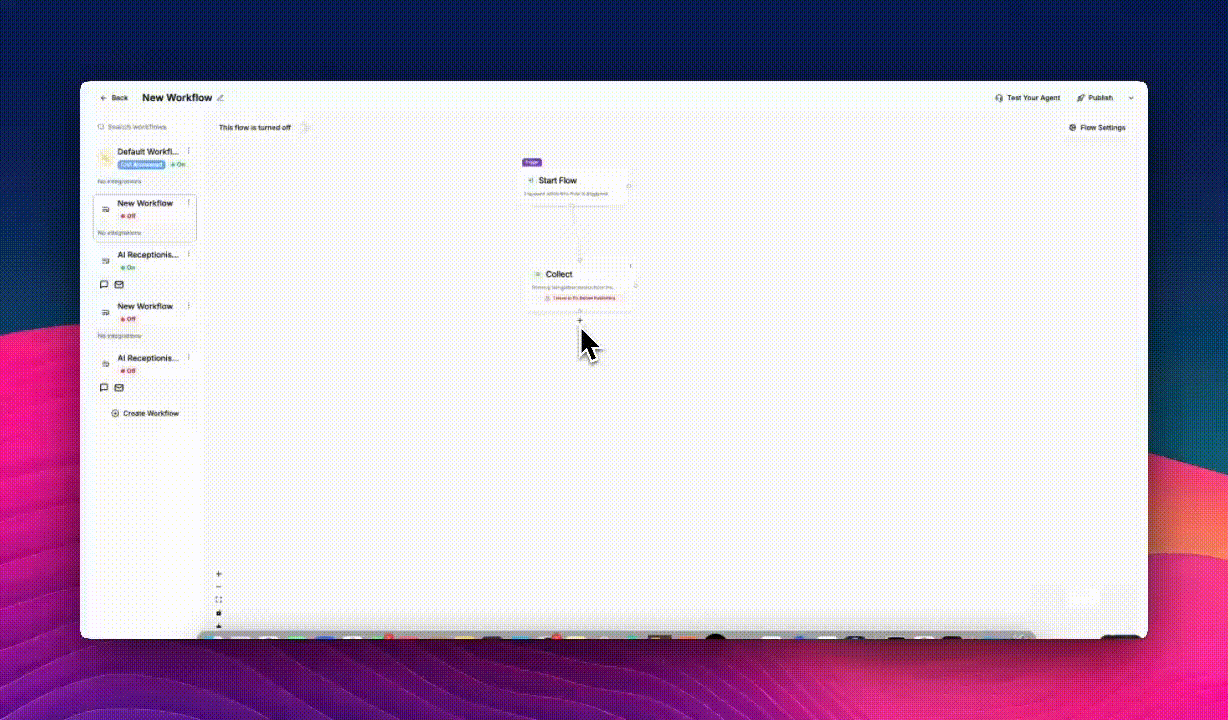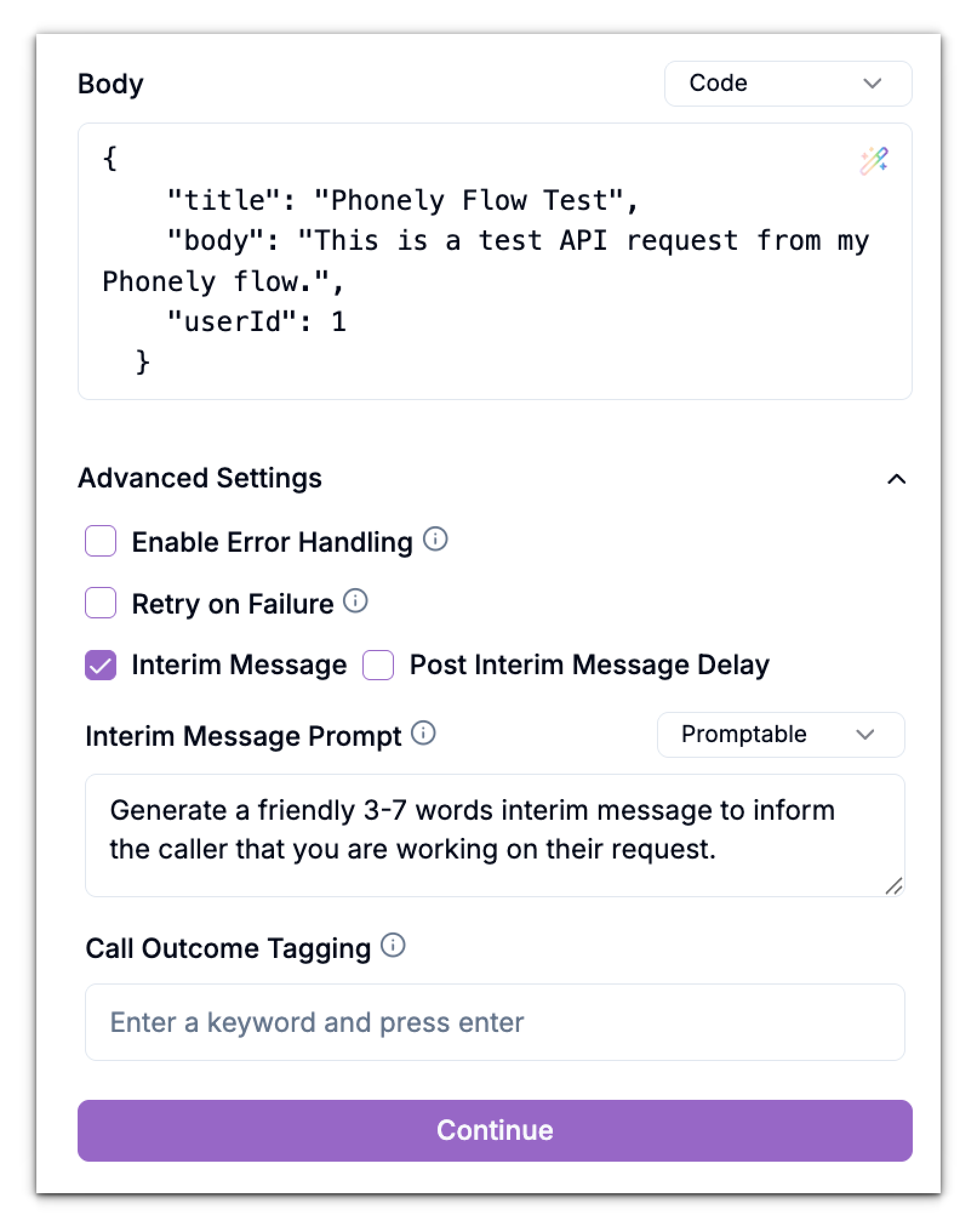
1
What the API Request Block Does
This block acts as a bridge between Phonely and another system.
It can:
It can:
- Send data collected from callers (e.g., names, phone numbers, emails).
- Retrieve data (e.g., product info, availability, or pricing).
- Trigger workflows in apps like Zapier, Make, or your internal API.
2
Adding the API Request Block to a Flow
- Connect it below a Collect or Ask Exactly block if you want to send the data collected earlier.
- In your flow editor, click the ➕ (plus) icon below an existing block.
- In the popup menu, look under Live Call Actions.
-
Select API Request.
- You’ll see a new block added to your canvas labeled API Request.

3
Setup
When you open the block, you’ll see two ways to define your API request:After import, Phonely converts this into structured fields under Configure.
You’ll then define all settings step by step in the Configure tab.
Option 1: Import from cURL
If you already have a cURL command (e.g., from Postman or developer docs):- Paste it into the cURL Command box.
- Click Import from cURL.
Phonely automatically extracts the method, endpoint, headers, and body.
Option 2: Build Manually
If you don’t have a cURL command, click Build Manually.You’ll then define all settings step by step in the Configure tab.

4
Configure
The Configure tab is where you define what your API request should do.This is the destination for your data.
Click + Add to add key-value pairs such as:
Switch between Code (for JSON) and Raw (for plain text).Example:
These options help control the flow behavior during API communication.
Click Continue to save and move on to the Test step.
1. API Method
Select the type of request from the dropdown:GET– Retrieve data from a system.POST– Send new data (most common).PUTorPATCH– Update an existing record.DELETE– Remove a resource.
Example: Choose POST when sending form data or new entries to an external app.
2. API URL
Enter the endpoint where the request should go, e.g.:3. Headers
Headers define metadata or authentication details for your API call.Click + Add to add key-value pairs such as:
| Key | Value |
|---|---|
| Content-Type | application/json |
| Authorization | Bearer YOUR_API_KEY |
4. Query Parameters (optional)
Use this if your API uses query strings in the URL (e.g., filtering or pagination).Example:| Key | Value |
|---|---|
| userId | 5 |
| limit | 10 |
5. Body (For POST, PUT, PATCH Requests)
Define what data will be sent.Switch between Code (for JSON) and Raw (for plain text).Example:
6. Advanced Settings
Click to expand this section.These options help control the flow behavior during API communication.

| Setting | Description |
|---|---|
| Enable Error Handling | Lets you catch failed API calls and redirect the flow. |
| Retry on Failure | Retries automatically if the server doesn’t respond. |
| Interim Message | Sends a short message to the caller (e.g., “Please hold while I send your request.”). |
| Post Interim Message Delay | Adds a short pause after the interim message. |
| Call Outcome Tagging | Add labels for analytics or call reports (e.g., “api_success” or “crm_update”). |
5
Test Stage
Testing ensures your configuration works before you publish your flow.If failed, you’ll get an error message explaining what went wrong (e.g., invalid URL, authentication error, or timeout).
- Click Test.
Phonely will send the request exactly as you configured. - The response will display instantly, showing whether it succeeded or failed.
6
Usecases for API Requests
| Scenario | Action | Example Use Case |
|---|---|---|
| CRM integration | POST | Send collected lead data to HubSpot or Zoho CRM |
| SMS gateway | POST | Send a text message via Twilio |
| Data lookup | GET | Fetch an order status or product info |
| Notification | POST | Trigger a Slack or Discord webhook |
| Ticket creation | POST | Create a support ticket in Zendesk or Freshdesk |

